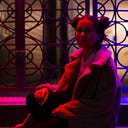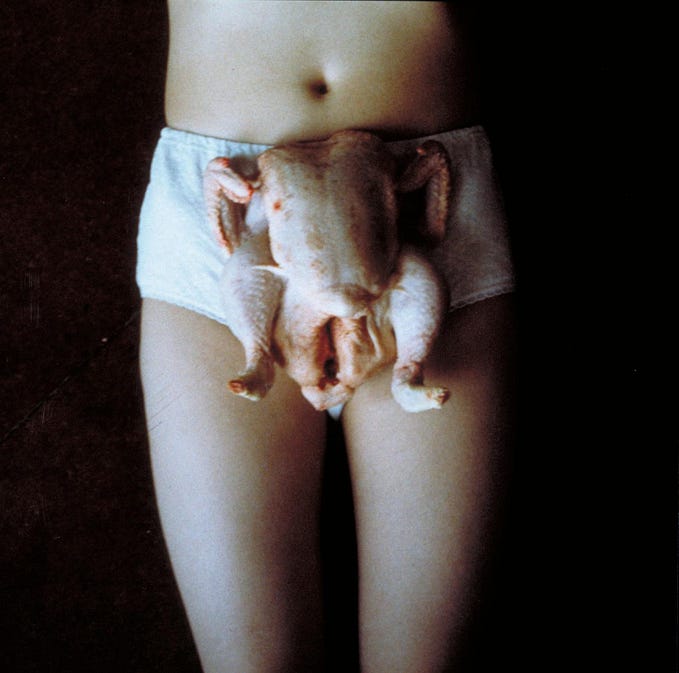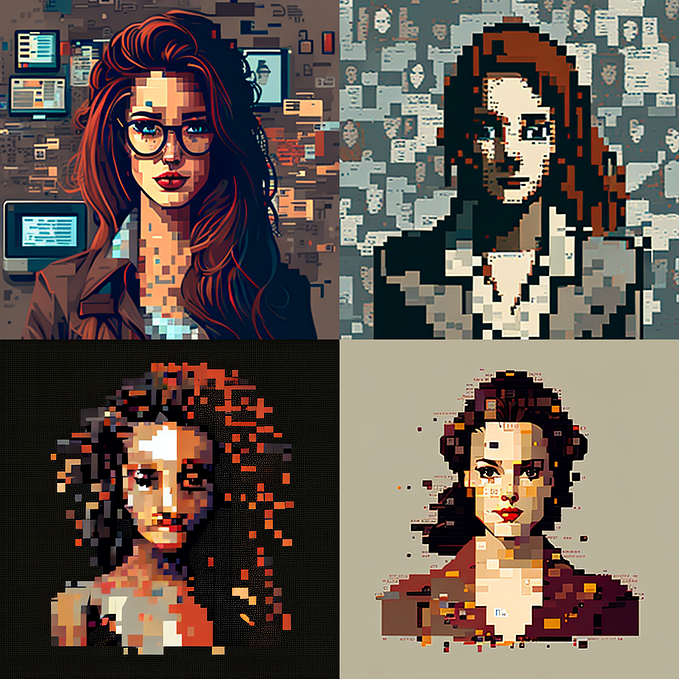Creative Practitioner: Andrew Peachey

Creating comes in a plethora of processes that are often a reflection on the way an individual thinks. These changes can be seen in their practical knowledge, cultural knowledge, and social knowledge. Andrew Peachey has studied a Master of Visual Arts with a focus on “how can the depiction of religious baptismal rituals through contemporary painting practice be placed into a secular symbolic context?” Currently, he is working on a personal project focusing on his family history through the embodiment of family objects. In the processes for both bodies of work, Peachey has unknowingly used a combination of creative practice theories to help develop his ideas. However, due to the age of his chosen art form, it can be argued whether or not his creative processes are either adhering to tradition or challenging the expectations of the art form.

Throughout Peachey’s Master of Visual Arts, he was able to broaden his knowledge across different artforms and project context, therefore expanding his domain-relevant skills. Often mistaken as creativity, Amabile describes domain-relevant skills as an expert in an area[i]. Peachey’s knowledge isn’t simply in painting techniques but also includes a range of art mediums. During his MVA Peachey
“…aligned with a video artist who translated Renaissance paintings into video. I translated the thinking from one of his videos back into the language of paint to create a body of work.”[ii]
He continues to explain in his exegesis how he used computer apps such as Photobooth and Photoshop liquification[iii] to explore potential painting compositions. Through this range of knowledge in differing artforms, it has allowed Peachey’s creative epiphanies to come to fruition. In his interview he writes:
“…it’s a combination of reading, looking at other artists’ works and how they have used processes to create what they want to say in physical form, listening to others (sermons, artists, philosophers) speak.”[iv]
Amabile writes on the importance of a broad range of domain skills as they are “…a better creativity enhancer than a deeper knowledge in the same area.”[v] Csikszentmihalyi theorises similarly to Amabile[vi], proving Peachey’s adherence to creative practices. Considering art is frequently linked to symbolism, context, and the person, it’s important to understand the context of Peachey’s MVA and how it links to domain-relevant skills. His main focus required thorough research into Christianity and depictions of Biblical texts in historic artworks. This research acted as a key motivation towards his paintings, showing, as Csikszentmihalyi theorises, how broader knowledge in the domain increases the likelihood of a creative response.[vii]

Sternberg’s Theory of Investment in Creativity shows a large consideration of internal variables which can be seen in Peachey’s processes throughout his MVA. The key internal variables seen are intelligence, knowledge, and personality. As a majority of his domain-relevant skills were already explored in the aforementioned paragraph, this paragraph will focus more on intelligence and personality. Sternberg identifies how more creative solutions can arise from the ability to redefine a given problem, which forms part of the intelligence factor.[viii] Throughout Peachey’s exegesis, he reflects on the problems he faces within his artworks. At first, he acknowledges his earlier paintings were large and heavily symbolic, perhaps even obscure.[ix] In the further development of his paintings, he considers using a human figure to allow for a clearer context.[x] Unfortunately, upon reflection on his art pieces, where he depicts a lack of commitment to faith, the context of faith wasn’t clear. The human figures were not performing faith actions.[xi] Continuing with this process, Peachey shows a clear use of intelligence as an internal variable. He shows the ability to redefine problems; how can the actions of faith be clearly contextualised in his artworks? Finally, Peachey is inspired by baptism and the idea of encasing oneself with water as a full commitment to faith.[xii] His writings show both two key factors of intelligence Sternberg writes about; the ability to redefine problems and the ability to recognise which of your own ideas are worth investing in.[xiii] This is paired well with another internal variable, personality. In Sternberg’s writings, he theorises about key personality attributes seen in a creative person. This includes perseverance in the face of obstacles.[xiv] The entire Chapter Two of Peachey’s exegesis is proof of his perseverance throughout his Masters. Considering a subheading within Chapter Two is entitled “Turning Point[xv]” it shows Peachey’s understanding of his own creative process and insinuates how he was persevering up until that point.
Throughout Peachey’s perseverance, he uses a combination of divergent and convergent thinking, but perhaps not in the most ideal methods. In his interview, Peachey states his main ideas come from an initial epiphany. When asked how his creative epiphanies come to him, he responds;
“I am a reflective thinker. None of the ideas come quickly… Eventually they come together in a messy form, then I start to play with materials and they often don’t work, then I keep working them until I’m relatively happy with the outcome.”[xvi]
Divergent thinking focuses on the incubation of ideas[xvii]. Peachey sets himself up for divergent thinking through broadening his domain-relevant skills and knowledge which allows him to generate more creative ideas. Where Peachey goes wrong is attempting to combine divergent and convergent thinking in the same situation. Convergent thinking is a problem-solving technique and shouldn’t be done at the same time as ideation as it can restrict the open-mindedness needed in idea creation.[xviii] As Manning explains in her analogy of divergent and convergent thinking, one cannot reach for the sky and touch their toes at the same time.[xix] A suggestion for Peachey would be to separate divergent thinking and convergent thinking. Play with materials and experiment with ideas without worrying about whether or not they work, instead of simply waiting for them to work. Afterward, wait a while before trying convergent thinking (at least a day). Look at the experiments and use the intelligence Sternberg proves you have to recognise which of your own ideas are worth investing in. Within Peachey’s exegesis, it shows a separation of these two thinking methods. However, in his own reflections, it suggests it’s not always the case.

When comparing Peachey’s MVA project with his current personal project, it’s clear how much his environmental and social context played a part in his creative processes. As a whole, creative practice theorists agree to variables outside of the person playing a huge role in their creative processes, however, they use different words to mean the same thing. While Amabile uses the term “social environment”[xx], Sternberg refers to it as an “environmental context” and Csikszentmihalyi refers to it as “field.”[xxi] Regardless of the term, it’s clear Peachey’s environmental context changes between his MVA project and his current personal project. Csikszentmihalyi uses the arts as an example for “field” factors, suggesting this could include teachers, museum curators, critics, and collectors.[xxii] Peachey clearly identifies these elements in his interview, stating “…which then lead to discussions with my supervisors and then researching other artists.”[xxiii] An obvious difference between his MVA and the personal project would be the lack of supervisors directing his processes. With more freedom regarding his choices, Peachey talks about the social and environmental influences when choosing which pieces to focus on:
“There’s mum’s side of the family and dad’s side of the family. Many of the objects I have taken for granted my whole life because they were part of the fabric of our family. At this point, I am focussing on my mum’s side of the family as I have in my possession my great grandparent’s metal trunks they used to bring their possessions from London in the 1880s. I also have some of their clothes. This is amazing that I have Victorian family clothes in my possession.[xxiv]
While his current project focuses heavily on family history, Peachey still identifies both this project and his MVA project as personal: “a key factor for the ideas and the works is that they are personal.”[xxv] Therefore, the biggest drive in Peachey’s creative process would be the personal ties he has behind them. This supports Amabile’s great emphasis on motivation and social factors in the creative process.[xxvi]
The opinions of the traditions of painting have changed throughout the decades, making it unclear whether or not Peachey’s personal processes are adhering or challenging the artform. As Farrago states, “painting has been declared dead so many times over the past 150 years that it can be hard to keep track.”[xxvii] With an art form that is constantly evolving and changing how can one define the traditional process? When asked whether or not Peachey believed he adhered or challenged his creative industry, he responded:
“Painting is a very traditional process. However, there have been plenty of arguments to say that it is a dead process meaning there’s so many other new processes to use particularly IT processes. Painting is also very solitary process which is also very traditional. The world’s top artists do not work alone but in large teams. I am not working in a team, I’m on my own. I’m not very good at collaborating.”[xxviii]
Looking at his response two opinions can arise. As he states, he works alone, following the traditional process of the art form. However, he also identifies the world’s top artists don’t work alone, which insinuates the change of processes for painting. Therefore, Peachey appears to be challenging the current industry expectations. While he identifies his craft as a traditional process, some of the processes he lists in both his exegesis about his MVA project and his interview about his current project, he’s arguably not following the traditional process. In his interview he states his main strategy is:
“I will initially work with a concrete source, such as photographs or objects and create a composition from that. If it’s a photograph, it will be either me or a friend who has taken it. I’ll then play around with it on Photoshop, then use that as the basis for the composition.”[xxix]
The introduction of photography in the 1830s sent a ‘blow’ to traditional painting, but in some ways functioned as dialogue for paintings. The realism in photography was rejected through unnatural colours in Van Gogh or encouraged hyperrealism in Andy Warhol.[xxx] Therefore, depending on who you ask, his integration of photography and Photoshop to help compile initial compositions prior to his painting process can either adhere to or challenge the creative processes in his industry. After writing this, I asked Peachey to further elaborate on whether he considers himself a contemporary or traditional artist.
“Contemporary means ‘present or current’, so I am contemporary. My work is realistic, but it is also abstracted. It’s abstracted by the movement of water and the perceived abstraction on the figure under the water. I also aim to abstract it further by truncating the figure or varying the scale. I’m also traditional in the sense that I use traditional methods of painting.”[xxxi]
While it is clear Andrew Peachey unknowingly follows the processes described through theorists such as Amabile, Csikszentmihalyi, and Sternberg, it’s still uncertain whether or not his ideation stage adheres to traditional painting. As identified by Peachey himself, his solitary practice proves he follows traditional painting processes. However, these practices are not commonplace for the current world’s top artists. While he follows some traditional methods of painting, he does not necessarily follow the processes. Considering painting has been part of the world’s history since history was written, the expectations change too frequently to state whether or not Peachey conforms to them.
[i] David Burkus, The Myths of Creativity : The Truth about How Innovative Companies and People Generate Great Ideas (New York: John Wiley & Sons, Incorporated, 2013), 7.
[ii] Andrew Peachey, email to author, 21 June 2020.
[iii] Andrew Peachey, How Can the Depiction of Religious Baptismal Rituals through Contemporary Painting Practice Be Placed into a Secular Symbplic Context? (South Bank: Griffith University, 2012).
[iv] Andrew Peachey, email to author, 21 June 2020.
[v] Burkus, The Myths of Creativity : The Truth about How Innovative Companies and People Generate Great Ideas, 9.
[vi] Eunice ML Soriano de Alencar & Denise de Souza Fleith, “Recent theoretical contributions to the study of creativity,” in Psychology: Theory and Research (2003).
[vii] de Alencar and de Souza Fleith, “Recent theoretical contributions to the study of creativity.”
[viii] ibid
[ix] Peachey, How Can the Depiction of Religious Baptismal Rituals through Contemporary Painting Practice Be Placed into a Secular Symbplic Context?
[x] ibid
[xi] ibid
[xii] ibid
[xiii] de Alencar and de Souza Fleith, “Recent theoretical contributions to the study of creativity.”
[xiv] ibid
[xv] Peachey, How Can the Depiction of Religious Baptismal Rituals through Contemporary Painting Practice Be Placed into a Secular Symbplic Context?
[xvi] Andrew Peachey, email to author, 21 June 2020
[xvii] Martin Luenendonk, Idea Generation: Divergent vs. Convergent Thinking, April 29 2015, https://www.cleverism.com/idea-generation-divergent-vs-convergent-thinking/.
[xviii] ibid
[xix] Harvid Professional Development, YouTube, May 16 2016, https://www.youtube.com/watch?time_continue=1&v=xjE2RV6IQzo&feature=emb_logo.
[xx] Burkus, The Myths of Creativity : The Truth about How Innovative Companies and People Generate Great Ideas, 6.
[xxi] de Alencar and de Souza Fleith, “Recent theoretical contributions to the study of creativity.”
[xxii] ibid
[xxiii] Andrew Peachey, email to author, 25 June 2020
[xxiv] ibid
[xxv] ibid
[xxvi] de Alencar and de Souza Fleith, “Recent theoretical contributions to the study of creativity.”
[xxvii] Jason Farrago, Painting’s obituary has been written several times over the past 150 years. But it’s now experiencing a major revival, writes Jason Farago, February 18 2015, https://www.bbc.com/culture/article/20150217-is-painting-dead.
[xxviii] Andrew Peachey, email to artist, 21 June 2020
[xxix] ibid
[xxx] Farrago, Painting’s obituary has been written several times over the past 150 years. But it’s now experiencing a major revival, writes Jason Farago
[xxxi] Andrew Peachey, email to author, 30 June 2020.









